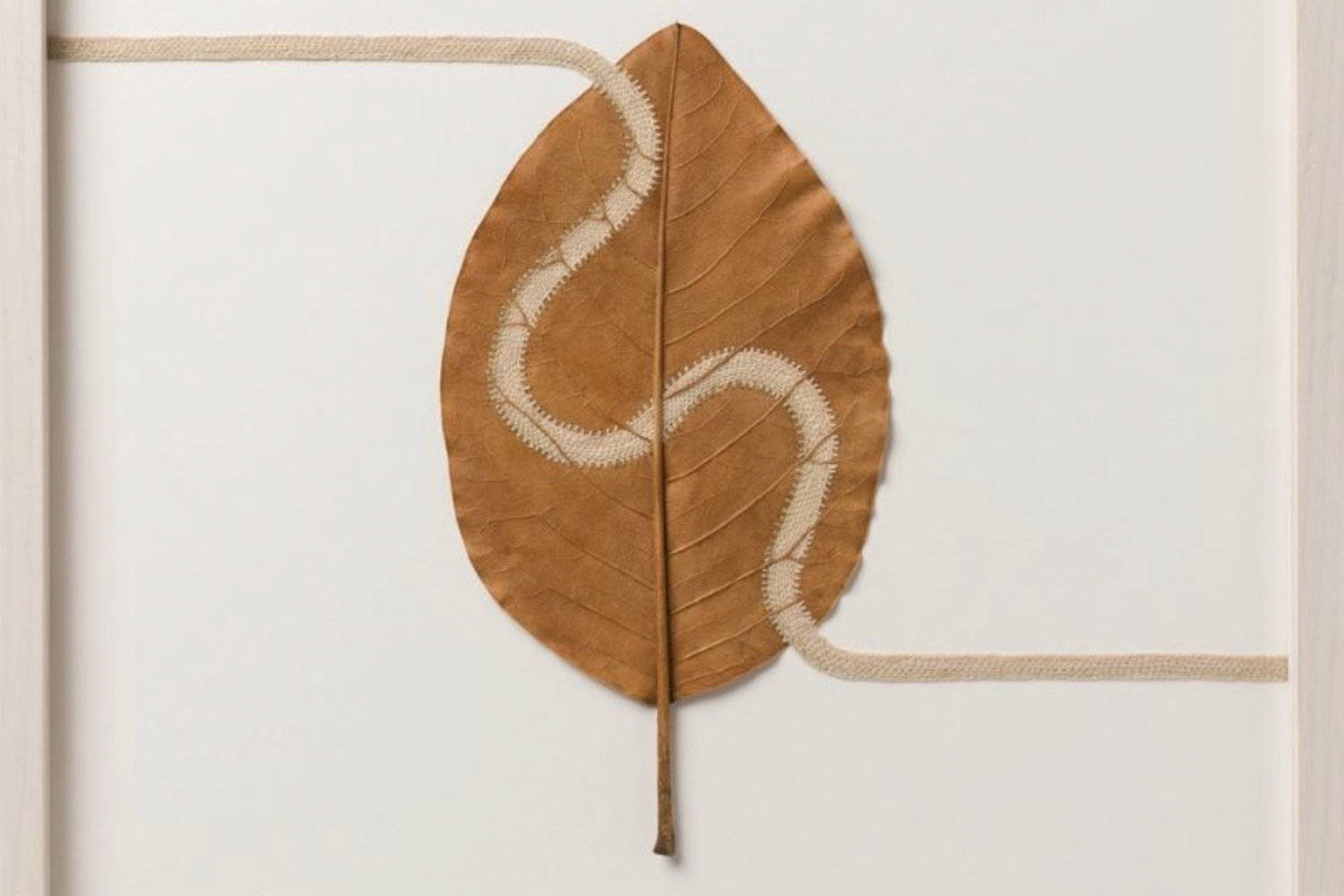Art that is a little more fragile, yet still very beautiful
The question of permanence and immortality has bedeviled humanity throughout the ages.
The poem “Ozymandias,” by the Romantic English poet Percy Bysshe Shelley (1792-1822), laments that fruitless quest of the ancients.
Although the poem does not specify a particular country, we are all familiar with the ancient Egyptian efforts building tombs and mummifying their bodies to escape oblivion.
My introductory column a couple weeks back was intended to demonstrate how artwork created with hardy materials has a significantly longer life than those created with more fragile organic ones, and how much we lose when those pieces disappear through natural processes. But there are other viewpoints.
A few months ago, I accidentally discovered the artistic creations of Susanna Bauer, who was born in 1969 in Eichstätt, Germany. The area is somewhat rural and her childhood there encouraged an enduring love of nature.
Since 1996, she has lived in England, currently residing in Penzance, in the West Penwith area of Cornwall. Cornwall is the westernmost part of southern England, a tongue of land protruding into the Atlantic Ocean.
Bauer studied landscape architecture at the Technische Universität (Technical University) in Munich, and worked as a model-maker for the creative industry, advertising and film in Germany, Ireland and the United Kingdom. It was through that she obtained an overview of various artistic techniques ranging from the graphic arts to sculpture.
Parallel to working in model-making studios, she then continued her education in 2007 at the Camberwell College of Art in London where she studied art and design, Finding one’s métier can take years. but Bauer’s resolved into two areas: nature and needlecraft — primarily crochet, which she had learned as a child.
Crochet is a fabric-making technique using yarn and a single hook-shaped needle. While knitted material remains from the 11th century are known, crocheted materials are first known during the 19th century. The word “crochet” is derived originally from the German croc through the French, both meaning “hook.”
Bauer uses crochet to embellish and transform natural materials into unique works of art.
Since dried leaves are the central motif of her current work, one of the most common questions is, “How do you do that?” She gently deflects that question in her various workshops by saying that “Combining this method (crochet) with such a fragile material as leaves highlights the delicate nature of the subject matter that I’m interested in — the tenderness and tension in human connections, the transient yet enduring beauty of nature that can be found in the smallest detail, vulnerability and resilience that could be transferred to nature as a whole, or the stories of individual beings.”
In her vision, the crochet threads represent strength and the leaves represent fragility.
However, exciting tidbits can be gleaned through careful reading. While she primarily uses leaves from magnolia (genus Magnolia) and plane tree (genus Platanus), her works also feature leaves from oaks (genus Quercus), gingkos (genus Gingko), beech (genus Fagus) and eucalyptus.
The bulk of her material is gathered during walks in the neighboring areas, and she has several favorite trees. The collected materials are brought back to her studio where they are washed and then dried for several weeks and stored, either pressed or hanging. She makes no effort to preserve the colors of the leaves, preferring the multiple shades of brown in the dried forms.
Not every leaf is used immediately after drying. Instead, a leaf may sit for years awaiting that perfect moment when its attributes are judged perfect for her next project. For some works, she cuts the leaves apart, rearranging them and crocheting the parts together, creating a novel artistic comment. She tends to work on several projects at the same, to maintain her exuberance and interest.
Once a piece is finished, it is framed behind conservation-grade glass, which both filters out the sun’s ultraviolet rays that could otherwise degrade and discolor the materials, and protects them against insects and moisture.
The leaves are not treated in any way to make them stronger. Bauer simply uses very small hooks and needles, and of course over time, she has developed an understanding of what she can expect from the material. The crochet thread is a finely woven cotton, and she considers it a means of “sculpture and construction.”
While researching this column, I discovered a newly developed public art form called “yarn bombing” in which brightly colored crocheted pieces are used to wrap tree trunks, light poles and other street objects, changing them into startling new sights.
I also discovered a new form of art crochet called “freeform,” crochet which moves beyond flat squares of fabric, creating circles, tube arcs, and spirals in one or two dimensions.
I have watched Bauer’s evolution of style from crocheting around small pebbles to working with leaves exclusively, and then to more complicated constructions using leaves and twigs. I can only imagine where she may be going from there!
Have a thought or comment for Sura Jeselsohn? Email her at greenscenesura@gmail.com.






